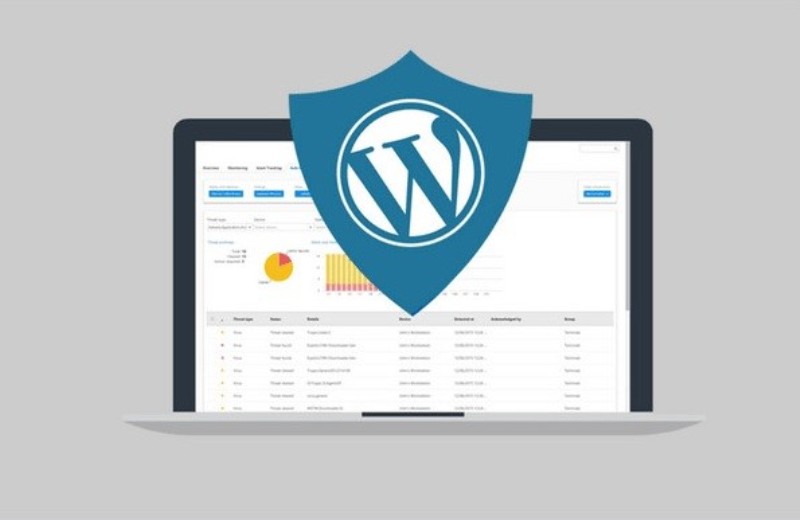Malware is a permanent concern for WordPress site owners. The open source nature of WordPress allows users to customize their site exactly how they want it to be. Many developers have created plugins and themes for WordPress, which are popular because of the features they offer. Some malicious developers have also created tools with malware engrained in them to carry out certain malicious activities on unsuspecting WordPress sites.
The average WordPress site owner will not understand the technical aspect of the code within each tool they use. Attackers cover up their malicious intentions with great features, which attract users to their plugin.
How does malware get onto your site?
Attackers will inject malware into your site through various third-party applications and software that offer some features that you may consider as of great for your site. Malware is easy to incorporate into a website without the user’s knowledge since most owners do not know what to look for when choosing plugins, themes and other customization options on offer for WordPress.
before installing any theme or plugin, you should look online to verify its credibility. If you are unsure about different sets of reviews, you may consider choosing only plugins available through official sources. This will reduce the risk of installing infected plugins onto your site.
What harm can malware cause?

There are four basic types of malware that attackers may develop and use to gain access to your site. While the purposes may vary, malware shares a common malicious trait. This software is added onto a website without the consent of the site owner, usually serving the attacker’s ends.
Spyware refers to malicious code and files that are designed to steal sensitive information such as passwords, bank details and other important personal data that may be used towards identity theft and fraud. If left on your site long enough, attackers will be able to steal valuable personal information from your visitors, as well as your own administrator logins which could hand access and control over to them for a long time.

Ransomware is designed to encrypt and hide data, which the website owner may only access after they have paid a certain amount of money. If a website owner regularly stores backups, ransomware will be easy to handle. However, if there are no copies of your files, you will lose your data.
Viruses are common amongst computers, but may also be used in an attack against your website. They target partial or total denial of service, which could permanently take down your website.
Adware places unwarranted advertisements onto your website. Visitors to your site will experience slower loading times, and may be redirected to malicious websites linked to the adware. Aside from reducing traffic levels to your own site, adware will affect user satisfaction and overall performance . It could affect your SEO ranking, reducing visibility and traffic levels in the long term as well.
What tools can you use to remove malware?
 Wordfence is a great malware removal plugin because it incorporates different measures to address dynamic problems. It has an advanced scanning feature that allows the plugin to detect malware even if it is a unique or new infection. The plugin features a range of infection signatures, helping it to develop the ideal reaction to a specific malware problem. It includes sources such as SpamHaus and Google’s safe browsing list to find a comprehensive list of tools that may be used to develop a malware attack, which ensures comprehensive coverage and protection from harm in case of an attack. The Wordfence support team can be reached through e-mail, and have an open policy for unusual code samples to help website owners maintain confidence in the security of their site.
Wordfence is a great malware removal plugin because it incorporates different measures to address dynamic problems. It has an advanced scanning feature that allows the plugin to detect malware even if it is a unique or new infection. The plugin features a range of infection signatures, helping it to develop the ideal reaction to a specific malware problem. It includes sources such as SpamHaus and Google’s safe browsing list to find a comprehensive list of tools that may be used to develop a malware attack, which ensures comprehensive coverage and protection from harm in case of an attack. The Wordfence support team can be reached through e-mail, and have an open policy for unusual code samples to help website owners maintain confidence in the security of their site.
Aside from removing malware, you also need to consider protecting your website from future infection. There are a number of security optimization plugins that will make it difficult for attackers to gain access to your site. iThemes Security, which was previously called Better WP Security, offers a variety of protective measures against malware attacks. This plugin will create two-factor verification for your login, shield your site from automated attacks, address any underlying security issues and allow scanning for malware detection. Attackers will not be able to access your site if you are running iTheme Security due to the variety of protective measures it will implement. It will also protect you from potential password decryption because the two-factor authentication feature requires that your access is linked to a phone number or e-mail address which can only be accessed by the site owner and other trustworthy persons.
 The All in One WP Security & Firewall plugin offers a similarly comprehensive protection against vulnerabilities. It scans your site for malware, alerts you of any suspicious code and implements measures to lock out these attackers. It will also notify you of any attacks prevented, helping you to understand the frequency and source of attacks for better protection.
The All in One WP Security & Firewall plugin offers a similarly comprehensive protection against vulnerabilities. It scans your site for malware, alerts you of any suspicious code and implements measures to lock out these attackers. It will also notify you of any attacks prevented, helping you to understand the frequency and source of attacks for better protection.
Optimize Database is a plugin designed to keep your database clean and error-free. While this does not offer any protection from malware, it restores your database to its optimum state. This makes it easier t restore your site operations after an attack without worrying that your database has been compromised.
Some plugins prevent automated attacks by limiting access to your site to only human users. one such tool is Key CAPTCHA, which prevents brute force attacks and spam by requiring users take a simple test that can not be solved by automated visitors. This plugin offers a variety of functions, including allowing users to log in and post comments.
Final thought
These plugins will help remove malware from your website. A number of them also offer features that improve the operation of other parts of your site as well. The plugins listed are available through trustworthy sources. You should avoid using any of these plugins if they are accessed through third party websites.
You should avoid installing too many plugins to be able to keep an eye out for any suspicious activity from either one. You may also need to run regular updates for installed plugins to reduce the likelihood that an attacker may get access. Remember to use a foolproof password and security question to improve your site’s protection.





